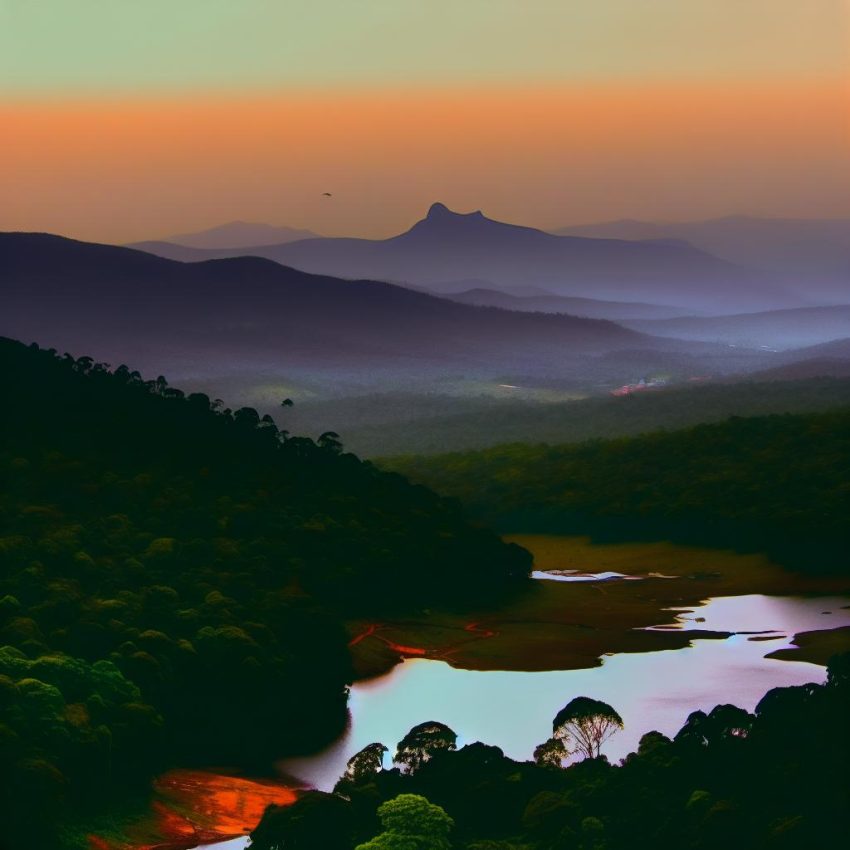Kudremukh National Park Overview
Kudremukh National Park is a pristine wilderness located in the Western Ghats of Karnataka, India. This vast green expanse covers an area of approximately 600 square kilometers and derives its name from the remarkable hill that features a peak resembling the face of a horse, which is known as “Kudremukh” in the native Kannada language. As a destination renowned for its breathtaking landscapes, diverse biodiversity, and distinctive geographical features, it offers visitors a chance to immerse themselves in nature’s splendor.
Geographical Features
Kudremukh National Park is notable for its varied geographical features. Its elevation ranges from 134 meters to 1,892 meters above sea level, creating a diverse array of habitats that support a wide variety of flora and fauna. The park’s terrain is a blend of rolling hills, steep cliffs, and deep valleys, providing an enticing setting for trekkers and nature enthusiasts alike. Furthermore, the hills within the park serve as the origin point for several vital tributaries, including those of the Tunga, Bhadra, and Nethravathi rivers, which play a crucial role in sustaining the region’s rich ecosystem.
Climate and Best Time to Visit
Visitors to Kudremukh National Park experience a tropical climate, which features heavy monsoons that occur between June and September. This period is characterized by lush greenery and vibrant water bodies, albeit with challenging weather conditions for exploration. Hence, the best time to visit the park is from October to May. During this time, the weather is generally more conducive to outdoor activities, offering pleasant temperatures and clearer skies. This is an ideal period for trekking through the park’s scenic routes and indulging in wildlife spotting and birdwatching.
Flora and Fauna
Kudremukh National Park boasts a rich array of plant and animal species that thrive in its diverse ecosystems. The park’s mix of dense forests, expansive grasslands, and freshwater streams creates a flourishing habitat that supports a wide variety of biodiversity.
Flora: Within the park, the landscape is predominantly covered by evergreen and semi-evergreen forests. These forests are home to a range of tree species including rosewood, teak, and eucalyptus, which contribute to the park’s lush appearance. Post-monsoon, the grasslands offer a stark yet picturesque contrast, lending the park stunning views that captivate visitors.
Fauna: The park is home to a diverse array of wildlife, making it an important preserve for endangered species. Notably, it serves as a protected habitat for the lion-tailed macaque, an endangered primate species found in this region. Among other fauna, the park harbors creatures like the Malabar giant squirrel, sambar deer, and the Indian bison. Birdwatching enthusiasts can delight in spotting a range of avian species such as the visually striking Malabar trogon, the impressive great hornbill, and the regal imperial pigeon.
Conservation Efforts
Designated as a wildlife sanctuary, Kudremukh National Park is under the protective oversight of the Karnataka Forest Department. A range of conservation efforts is actively implemented to preserve its unique ecosystems and protect the endangered species residing within its borders. These efforts include stringent anti-poaching measures, habitat restoration projects, and community engagement initiatives aimed at promoting sustainable tourism practices. Through collaboration with local communities, these strategies support the long-term viability of the park as a refuge for wildlife and a haven for nature lovers.
Visitor Information
Kudremukh National Park is accessible via several entry points, including the towns of Kalasa and Kudremukh. Prospective visitors should note that prior permission from the forest department is required for trekking and exploration activities within the park. A range of accommodation options is available to visitors, suiting various needs and preferences. From government-run guesthouses to private resorts, travelers can find an array of choices providing different levels of comfort and amenities.
To further assist travelers, information about visiting Kudremukh National Park, including detailed guidelines and resources, can be found on the official Karnataka Eco-tourism website. This valuable resource is designed to help visitors make the most of their visit while ensuring adherence to conservation best practices during their time in the park.
—
This expanded discussion of Kudremukh National Park offers an inviting glimpse into a vital region of natural heritage. Its breathtaking landscapes, rich biodiversity, and concerted conservation efforts all contribute to its status as a significant ecological and tourist destination. Through understanding the intricate balance of these elements, visitors can not only appreciate the natural beauty of the park but also become active participants in its preservation for future generations.
